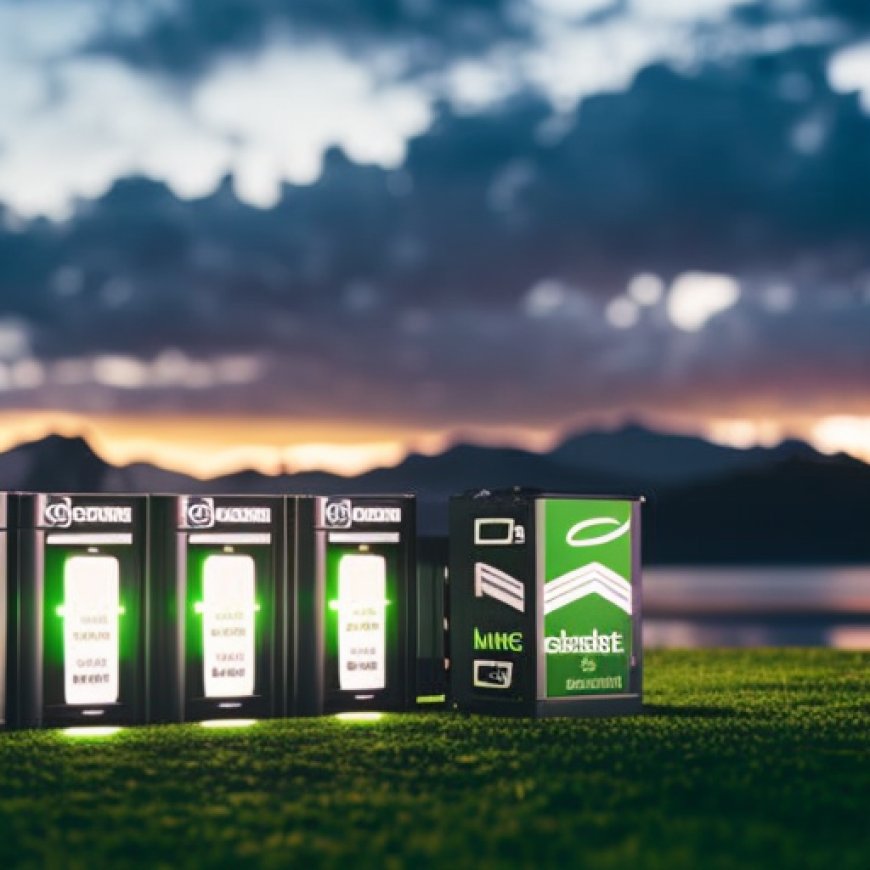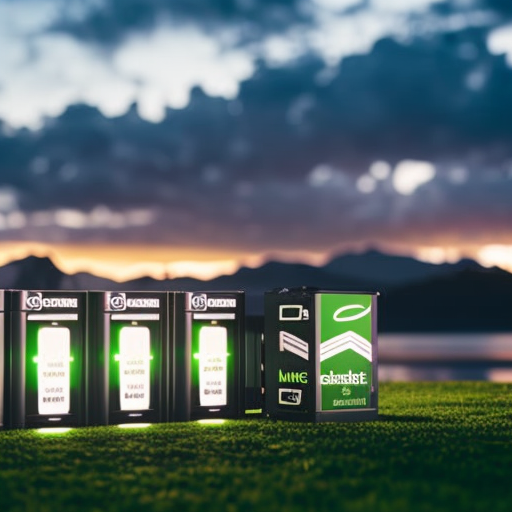Schneider Electric Releases All-In-One Battery Energy Storage System for Microgrids
Schneider Electric Releases All-In-One Battery Energy Storage System for Microgrids StreetInsider.com


Introduction
Schneider Electric, the global leader in digital transformation of energy management and automation, has announced the development of a Battery Energy Storage System (BESS) that is designed to be a part of a flexible, scalable, and highly efficient architecture. This BESS is driven by Schneider Electric’s controls, optimization, and digital and field services.
Partnership with Graybar
Graybar, a leading distributor of electrical and communications products, has been chosen as the inaugural channel partner for Schneider Electric’s BESS. Graybar is dedicated to renewable energy solutions and will offer the BESS as part of the EcoStruxure Microgrid Flex system.
Features of the BESS
The BESS captures energy from different sources and stores it in rechargeable batteries for later use. It is comprised of a battery system, battery management system, power conversion system, and controller. The BESS has been tested and validated to work with Schneider Electric’s standardized microgrid system, EcoStruxure Microgrid Flex. It features full integration, UL certification and compliance, easy installation and maintenance, resilience, and comprehensive services and support.
Full Integration
- The all-in-one enclosure seamlessly incorporates pre-integrated components, streamlining site engineering, construction, and installation processes.
- The paralleling capability enables multiple BESS units to function as a unified entity.
- This comprehensive integration ensures optimal performance and efficiency.
UL Certified and Compliant
- The solution is fully certified and compliant with UL9540 certification and has a cutting-edge fire safety system design.
Easy Installation & Maintenance
- The ready-to-deploy system facilitates installation processes and seamlessly integrates with Schneider Electric’s Energy Management Systems.
- It significantly reduces integration time and minimizes field errors.
Resilience
- The system offers bidirectional connectivity to the grid and can store energy for immediate access during outages.
- It can deliver up to 2 MW of power when needed.
Peace of Mind
- Comprehensive services and support are available throughout the lifecycle of the project.
- Warranty execution ensures optimal maintenance and care.
Benefits of the BESS
The stored energy from the BESS can be discharged to supply power to various facilities, electric vehicles, or the grid. It enables customer energy-use cases such as resiliency, demand-charge reduction, grid services, renewable self-consumption, decarbonization of electrical energy, and variable generation smoothing.
Conclusion
Schneider Electric’s new Battery Energy Storage System is a significant step forward in bringing resilient, sustainable, and economical energy solutions to the market. It harnesses onsite generation capabilities to deliver substantial energy savings while maximizing renewable integration. Graybar is proud to be the inaugural channel partner for this state-of-the-art system, further advancing sustainable technologies for mutual customers.
SDGs, Targets, and Indicators
1. Which SDGs are addressed or connected to the issues highlighted in the article?
- SDG 7: Affordable and Clean Energy
- SDG 9: Industry, Innovation, and Infrastructure
- SDG 11: Sustainable Cities and Communities
- SDG 13: Climate Action
2. What specific targets under those SDGs can be identified based on the article’s content?
- SDG 7.2: Increase the share of renewable energy in the global energy mix.
- SDG 9.4: Upgrade infrastructure and retrofit industries to make them sustainable.
- SDG 11.6: Enhance inclusive and sustainable urbanization and capacity for participatory, integrated, and sustainable human settlement planning and management.
- SDG 13.2: Integrate climate change measures into national policies, strategies, and planning.
3. Are there any indicators mentioned or implied in the article that can be used to measure progress towards the identified targets?
Yes, there are indicators mentioned in the article that can be used to measure progress towards the identified targets. These indicators include:
- Increased share of renewable energy in the global energy mix
- Upgraded infrastructure and industries to make them sustainable
- Enhanced inclusive and sustainable urbanization
- Integration of climate change measures into national policies and planning
Table: SDGs, Targets, and Indicators
| SDGs | Targets | Indicators |
|---|---|---|
| SDG 7: Affordable and Clean Energy | 7.2: Increase the share of renewable energy in the global energy mix. | Increased share of renewable energy in the global energy mix. |
| SDG 9: Industry, Innovation, and Infrastructure | 9.4: Upgrade infrastructure and retrofit industries to make them sustainable. | Upgraded infrastructure and industries to make them sustainable. |
| SDG 11: Sustainable Cities and Communities | 11.6: Enhance inclusive and sustainable urbanization and capacity for participatory, integrated, and sustainable human settlement planning and management. | Enhanced inclusive and sustainable urbanization. |
| SDG 13: Climate Action | 13.2: Integrate climate change measures into national policies, strategies, and planning. | Integration of climate change measures into national policies and planning. |
Behold! This splendid article springs forth from the wellspring of knowledge, shaped by a wondrous proprietary AI technology that delved into a vast ocean of data, illuminating the path towards the Sustainable Development Goals. Remember that all rights are reserved by SDG Investors LLC, empowering us to champion progress together.
Source: streetinsider.com

Join us, as fellow seekers of change, on a transformative journey at https://sdgtalks.ai/welcome, where you can become a member and actively contribute to shaping a brighter future.







